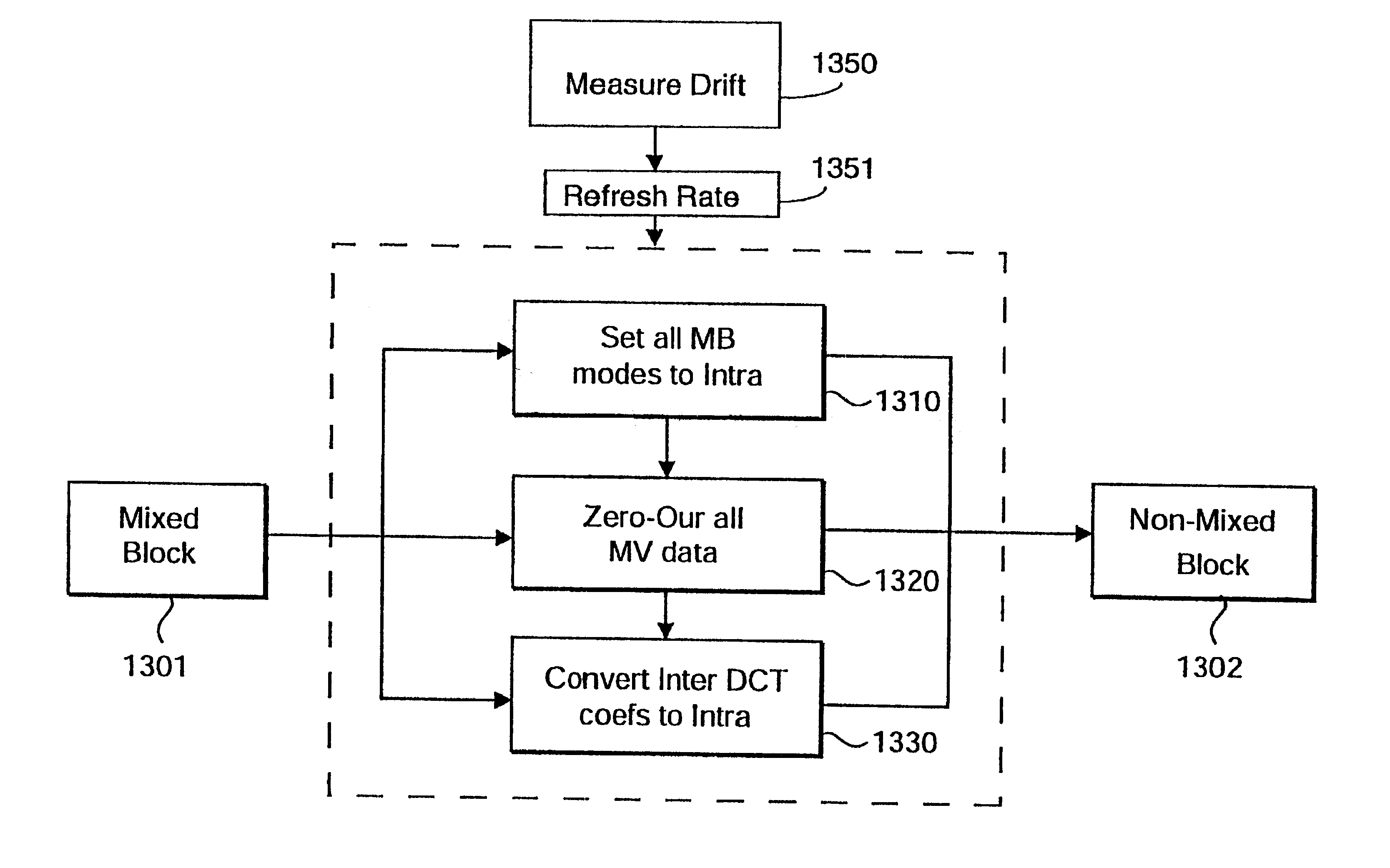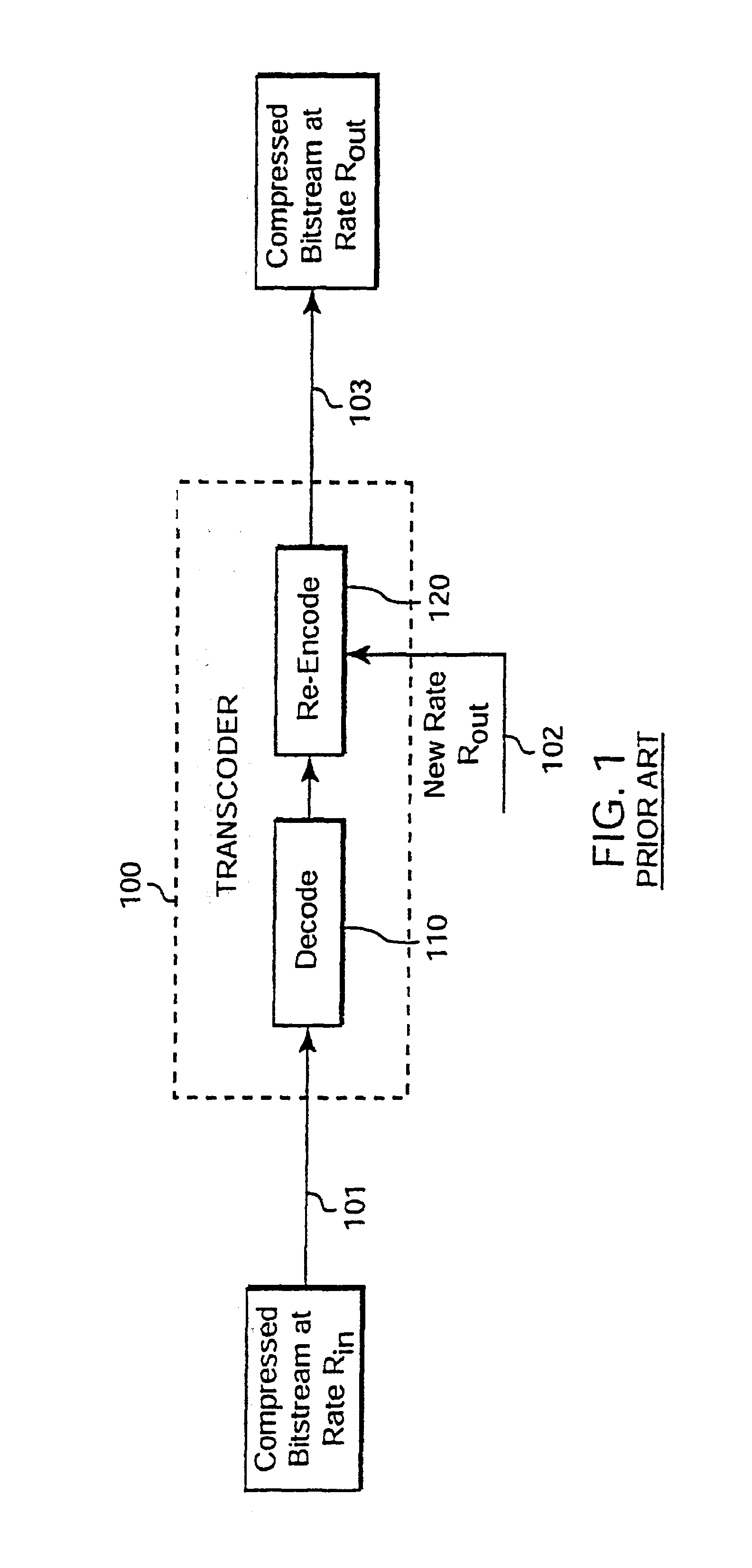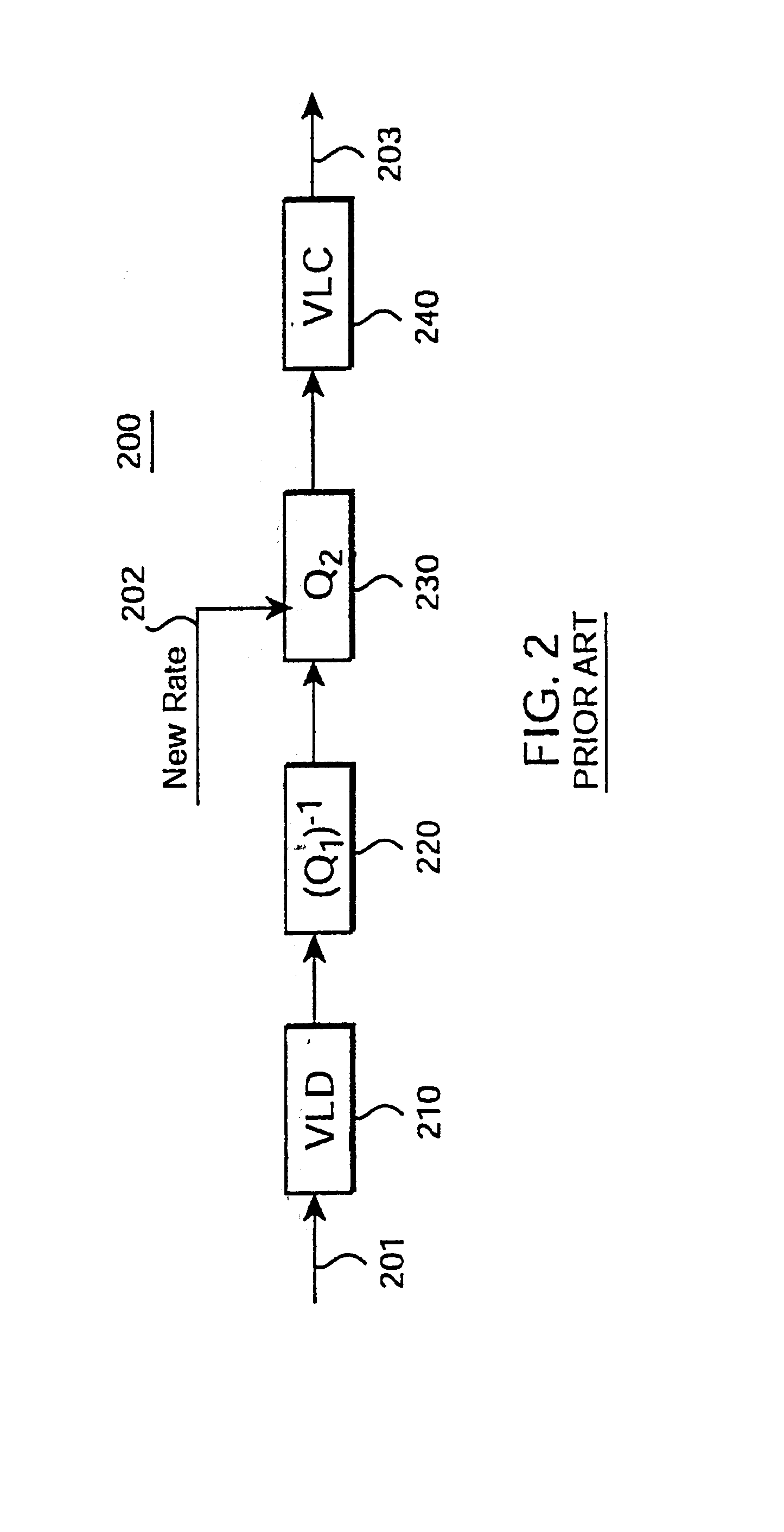Video transcoder with drift compensation
a video transcoder and drift compensation technology, applied in the field of video transcoders with drift compensation, can solve the problems of low quality of bitstreams, low efficiency of transcoding, and inability to achieve full decoding and full encoding in transcoders,
- Summary
- Abstract
- Description
- Claims
- Application Information
AI Technical Summary
Problems solved by technology
Method used
Image
Examples
first embodiment
[0088]In the group of blocks processor as shown in FIG. 14A, the MB modes of the group of blocks 1301 are modified to be inter-mode by the mode mapping 1310. Therefore, the MV data for the intra-blocks are reset to zero by the motion vector processing, and the DCT coefficients corresponding to intra-blocks are also reset to zero by the DCT processing 1330. In this way, such sub-blocks that have been converted are replicated with data from the corresponding block in the reference frame.
second embodiment
[0089]In the group of blocks processor as shown in FIG. 14B, the MB modes of the groups of mixed block are modified to be to inter-mode by the mapping 1310. However, in contrast to the first preferred embodiment, the MV data for intra-MB's are predicted. The prediction is based on the data in neighboring blocks, which can include both texture and motion data. Based on this predicted motion vector, a new residual for the modified block is calculated. The final step 1320 resets the inter-DCT coefficients to intra-DCT coefficients.
third embodiment
[0090]In a third embodiment shown in FIG. 14C, the MB modes of the grouped of blocks are modified 1310 to intra-mode. In this case, there is no motion information associated with the reduced-resolution macroblock, therefore all associated motion vector data are reset 1320 to zero. This is necessary to perform in the transcoder because the motion vectors of neighboring blocks are predicted from the motion of this block. To ensure proper reconstruction in the decoder, the MV data for the group of blocks must be reset to zero in the transcoder. The final step 1330 generates intra-DCT coefficients to replace the inter-DCT coefficients, as above.
[0091]It should be noted that to implement the second and third embodiments described above, a decoding loop that reconstructs to full-resolution can be used. This reconstructed data can be used as a reference to convert the DCT coefficients between intra- and inter-modes, or inter- and intra-modes. However, the use of such a decoding loop is not...
PUM
 Login to View More
Login to View More Abstract
Description
Claims
Application Information
 Login to View More
Login to View More - R&D
- Intellectual Property
- Life Sciences
- Materials
- Tech Scout
- Unparalleled Data Quality
- Higher Quality Content
- 60% Fewer Hallucinations
Browse by: Latest US Patents, China's latest patents, Technical Efficacy Thesaurus, Application Domain, Technology Topic, Popular Technical Reports.
© 2025 PatSnap. All rights reserved.Legal|Privacy policy|Modern Slavery Act Transparency Statement|Sitemap|About US| Contact US: help@patsnap.com



